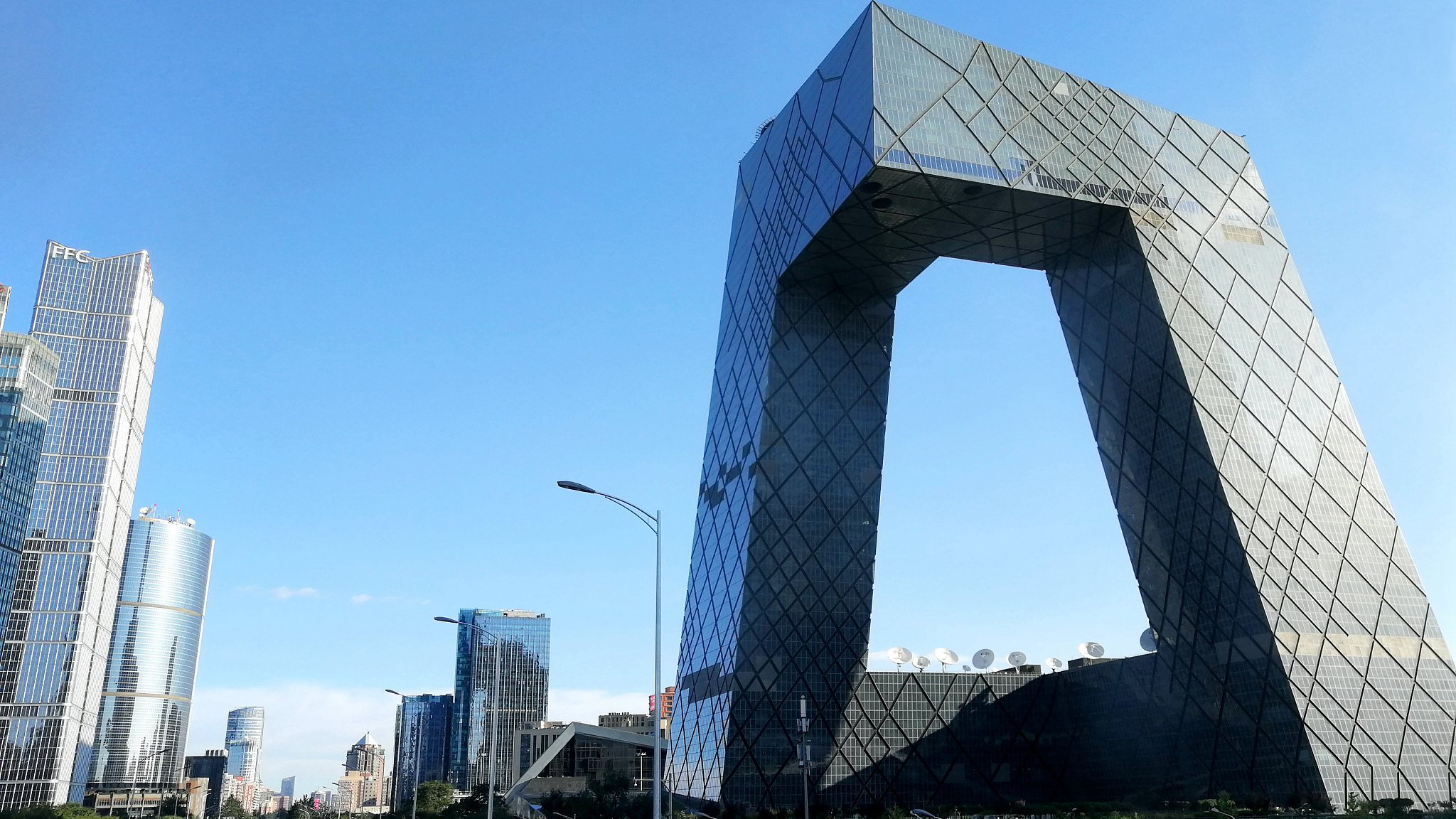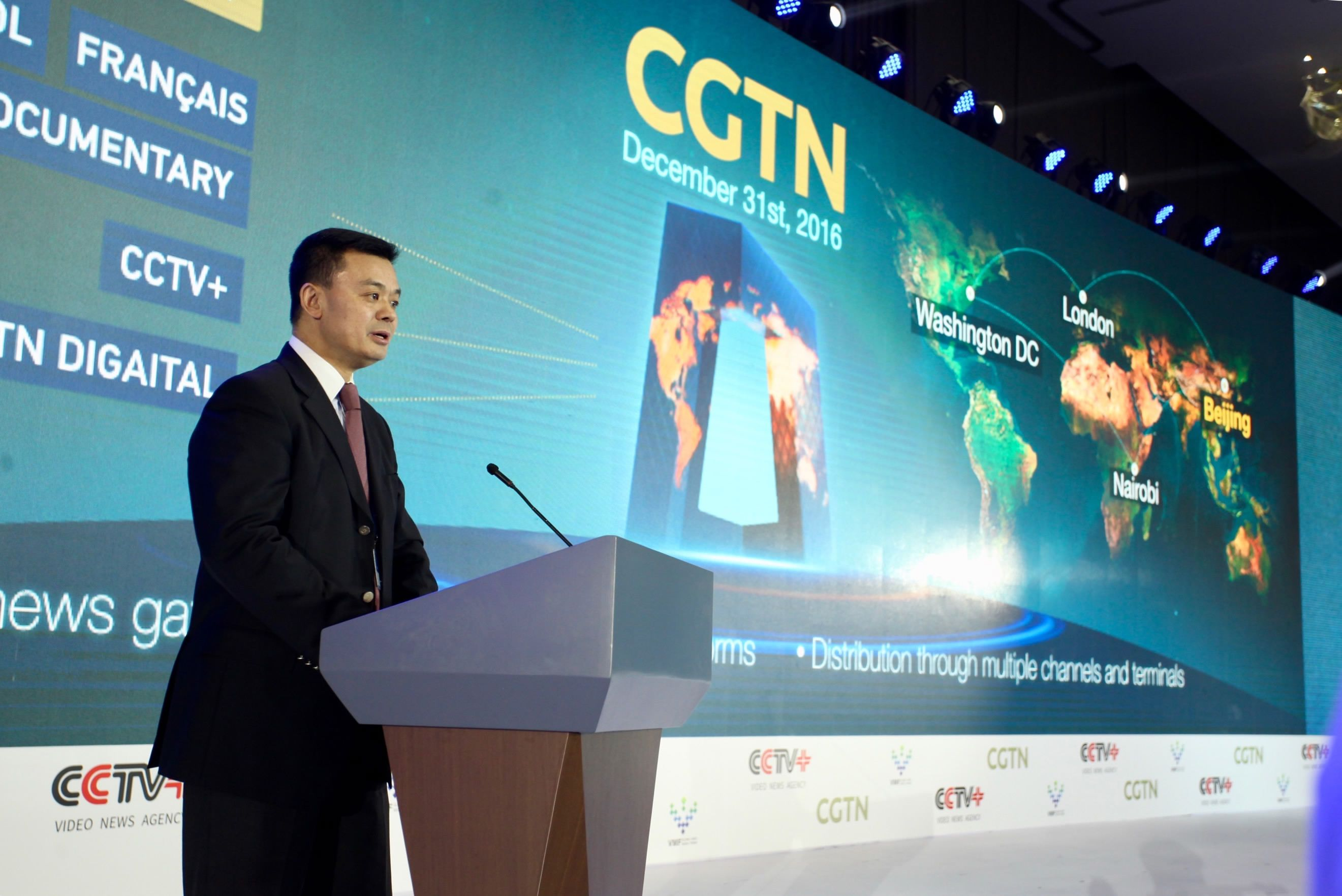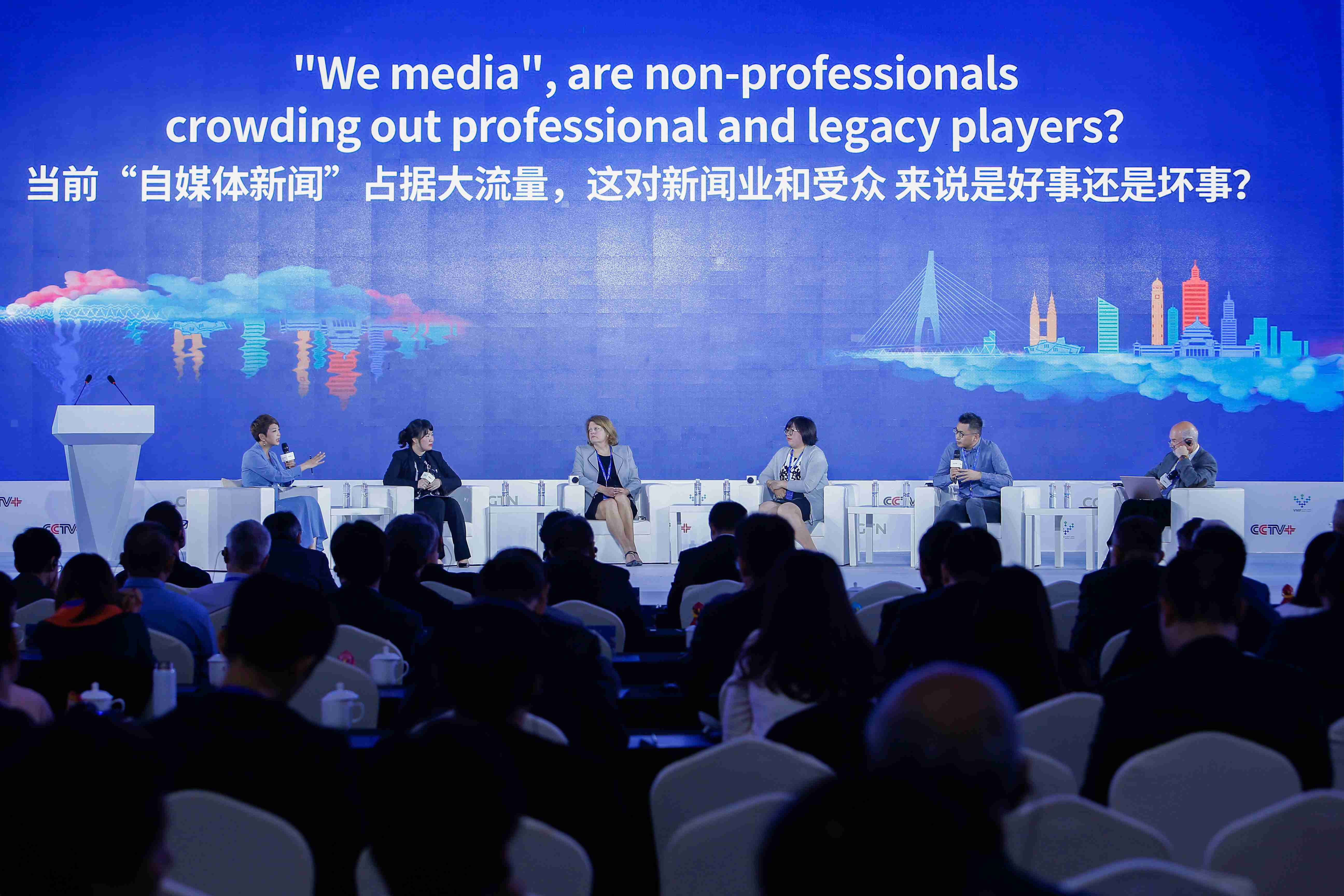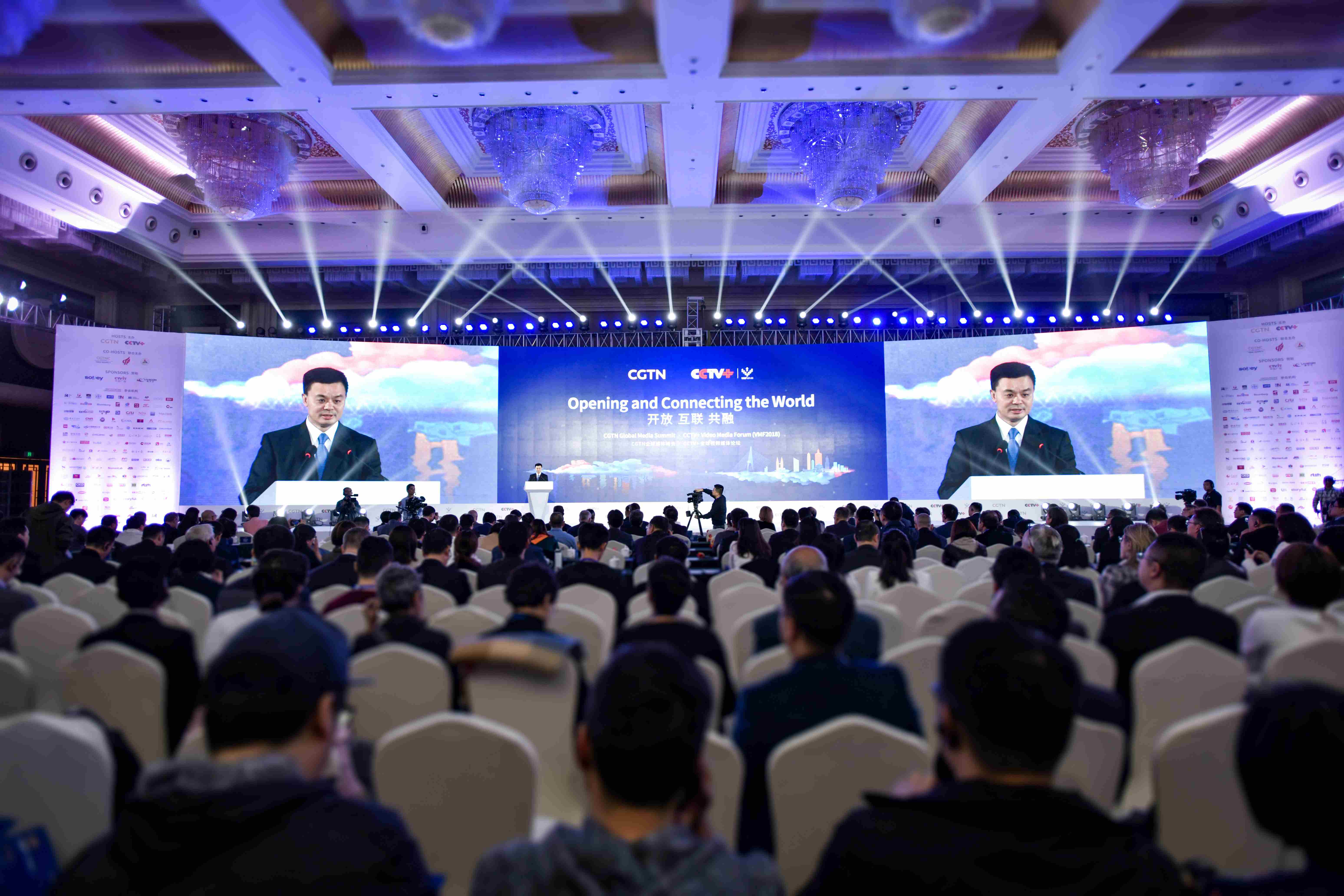
Opinions
14:15, 17-Oct-2018
Opinion: Interactive media fusion for information, entertainment and creativity
Updated
14:14, 20-Oct-2018
John Lee

Editor's note: John Lee is a professor at the University of Edinburgh. The article reflects the author's opinion, and not necessarily the views of CGTN.
The 2nd China Global Television Network (CGTN) Global Media Summit and the 8th Global Video Media Forum opened in southwest China's Chongqing Municipality on Tuesday.
Traditional broadcast media presents itself as a largely non-interactive media type. The content is mostly video, a linear medium. For most of its history it has had to be viewed as delivered, take it or leave it. On-demand videos introduce a minimal element of user interaction: a simple choice of what to watch.
But at the same time, people are becoming used to social media, a highly interactive media type. Increasingly, people's social groups are distributed, and they interact at a distance.
In the past, a group may have watched a TV program together in a room, actively discussing aspects of it as they viewed, but now distributed group consumption of media is not well supported. People are consuming through more than one screen at once, and their screens are not integrated into a coherent experience.

Jiang Heping, CGTN Controller delivers the opening speech at the CGTN Global Media Summit and the 8th Global Video Media Forum in southwest China's Chongqing Municipality, October 16, 2018. /CGTN Photo.
Jiang Heping, CGTN Controller delivers the opening speech at the CGTN Global Media Summit and the 8th Global Video Media Forum in southwest China's Chongqing Municipality, October 16, 2018. /CGTN Photo.
In this situation, a new model of consumption can be considered. This model would encourage interaction not only with other consumers but with the media content itself. The linear nature of the video medium needs to be disrupted, providing people with the means to select, abstract and mix elements of different media types to support a rich discourse around the content.
Consider a video program discussing the technology industry. This exists within a rich network of information about particular companies, products, and market trends as well as connections to a much wider range of topics.
It presents barely a slice of this information, a single path through the network. But the audience will feel many resonances with other things that they know are relevant, and they may want to share these with their group. And this should be easy: there is information about these things on the internet, it is necessary only to find it and link to it.
Perhaps, in the program, there is a one-minute discussion of the growth of Xiaomi: This could be selected, annotated with various opinions, linked to information about financial and other contextual factors, linked to sections of other programs about Huawei, Samsung, Apple, etc. For those with a particular interest, this one minute of video becomes the center of a complex, interactive dialogue, across different media and potentially in the public realm.
In the world of entertainment, reality TV, for instance, there is a frequent pattern of associated activity on social media, and sometimes follow-up shows that dissect and build around the content of the original program, recycling gossip etc.

The 2nd China Global Television Network (CGTN) Global Media Summit and the 8th Global Video Media Forum, October 16, 2018. /CGTN Photo.
The 2nd China Global Television Network (CGTN) Global Media Summit and the 8th Global Video Media Forum, October 16, 2018. /CGTN Photo.
These show the appetite for a distributed discussion of the content but are poorly integrated with the video material. The technology exists to provide much more organized support for a closer fusion between the original broadcast/video medium and the social media environment that surrounds it.
A few providers have experimented with annotation and linking to, from and between online video. YouTube has an annotation facility; it also allows online editing of video materials, to support remixing and repurposing; at Stanford, a system called Diver supports similar features for educational use; in Edinburgh, we have a prototype educational "media linker". Facilities like these are potentially central to the future development of online video.
Much as text has been revolutionized by its transformation into hypertext, the linear medium of video needs to be opened up to be built into a flexible, manipulable, re-usable material that people can use to create new perspectives on information, personalize, and exploit much more widely.
Applications of these technologies could be very widespread. In education, students can develop a community of activity that produces a dynamic and customized learning resource. In the creative industries, the video is obviously a commonly used medium, from high-quality professional output by artists and performers to casual amateur uses of many kinds.

The 2nd China Global Television Network (CGTN) Global Media Summit and the 8th Global Video Media Forum, Chongqing, October 16, 2018. /CGTN Photo.
The 2nd China Global Television Network (CGTN) Global Media Summit and the 8th Global Video Media Forum, Chongqing, October 16, 2018. /CGTN Photo.
Crowd-sourcing of content from viewing communities for integration into programming can also be harnessed. Expanding from the one-dimensionality of the standard functionalities in these areas offers a radically new opportunity for a much broader creative engagement between providers or performers and the viewing public.
There are excellent opportunities in this context to develop and exploit information harvesting and processing technologies. Intelligent identification of online material relevant to a given topic or entity is now feasible. This ties into automated annotation of video, which can be interrelated with and augmented by users' own annotations.
The actions of users who view videos can be used as a basis for machine learning, for example, the most salient points of interest in a video, or even the points most of interest to particular groups of viewers. This can then support a recommendation, not only of whole video clips but also directing to highlights.
Similarly, techniques already developed for automated note-taking in meetings can be exploited to identify transitions between events, significant topic changes, and other important features of video material, which can be segmented and pre-annotated for further use by viewers.
The viewers' own annotations (whether explicit or for example captured from contextually related social media posts or conversations) then provide a further source of data that can be used for more detailed tailoring and enhancement of the service. Automated curation and editing of material for particular user communities, perhaps including user-contributed content, becomes clearly inviting.
(If you want to contribute and have special expertise, contact us at opinions@cgtn.com.)

SITEMAP
Copyright © 2018 CGTN. Beijing ICP prepared NO.16065310-3
Copyright © 2018 CGTN. Beijing ICP prepared NO.16065310-3